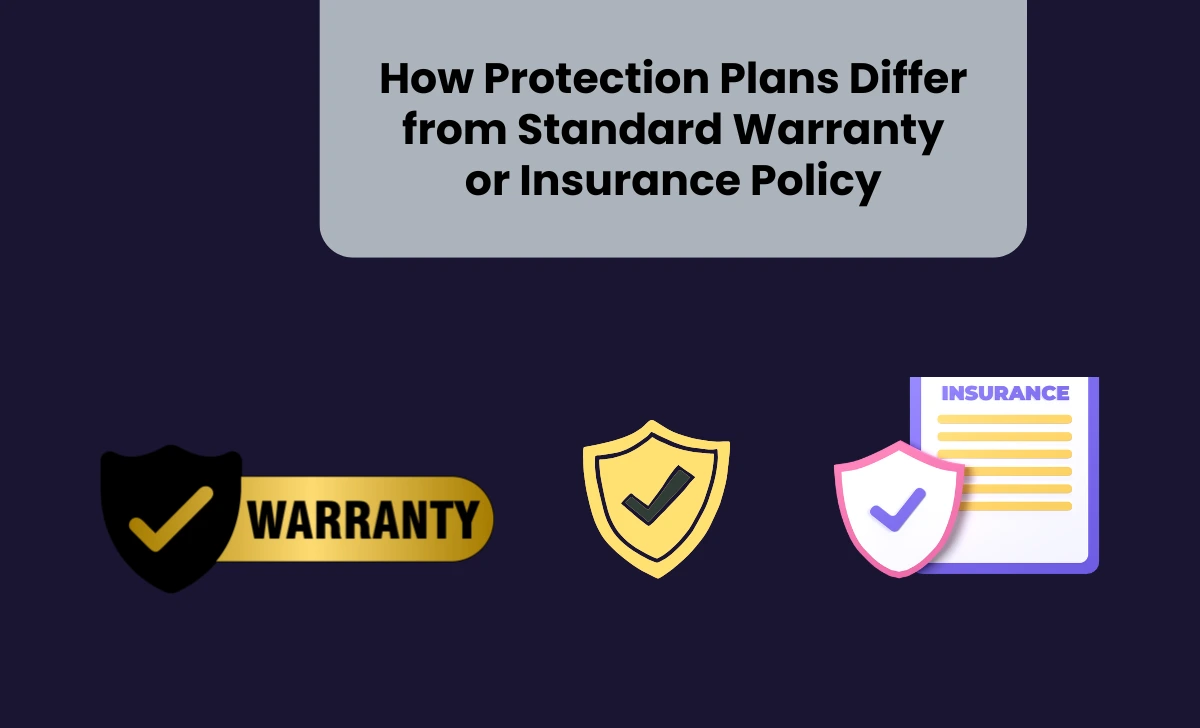Understanding the distinctions between protection plans, standard warranties, and insurance policies is essential for making informed decisions about safeguarding your purchases.
Each offers unique benefits, coverage scopes, and limitations.

What is a Standard Warranty?
A standard warranty, often provided by the manufacturer at no additional cost, is a legally binding assurance that covers defects in materials or workmanship for a defined period after purchase. Key features include:
- Coverage for Defects: Only manufacturing defects or faults in materials are covered.
- Limited Duration: Typically ranges from 90 days to a few years, depending on the product.
- Exclusions: Normal wear and tear, misuse, and unauthorized repairs are generally not covered.
- Claim Process: The manufacturer or seller specifies the process for repair, replacement, or refund within the warranty period.
What are Protection Plans?
Protection plans, also known as service contracts or extended warranties, are optional agreements you can purchase separately to extend or enhance the protection of your product beyond the manufacturer’s warranty. Key features include:
- Extended Coverage: Protection plans often begin after the manufacturer’s warranty expires and can last several additional years.
- Broader Protection: They may cover accidental damage, breakdowns from normal use, and sometimes even cosmetic repairs not just manufacturing defects.
- Additional Benefits: Some plans offer perks like technical support, maintenance, roadside assistance, or product replacement if repairs aren’t feasible.
- Flexible Terms: Coverage options and duration are often customizable, especially with third-party providers.
- Upfront Cost: Consumers pay a separate fee for these plans, which varies by product and coverage length.
Protection plans like walmart offer everything that extended warranties offer, plus coverage for accidental damage.
How do Insurance Policies Differ?
Insurance policies, such as product or car insurance, are regulated contracts that protect against specific risks, often including accidental damage, theft, loss, and liability. Key distinctions include:
- Risk-Based Coverage: Insurance covers losses due to events like accidents, theft, fire, or natural disasters often including third-party damages.
- Claim Assessment: Claims are subject to investigation and approval by the insurer, with potential deductibles and exclusions based on policy terms.
- Legal Liabilities: Insurance can cover legal liabilities, such as injury or property damage to others, which warranties and protection plans do not.
- Premium Payments: Insurance typically involves ongoing premium payments, not a one-time fee.
Comparison Table: Protection Plans vs Standard Warranties vs Insurance
| Feature | Standard Warranty | Protection Plan | Insurance Policy |
|---|---|---|---|
| Provider | Manufacturer/Seller | Third-party/Dealer/Provider | Licensed Insurance Company |
| Cost | Included in product | Additional (one-time/recurring) | Premium (recurring) |
| Coverage Duration | Limited (e.g., 1 year) | Extended (can be multi-year) | As per policy, often annual |
| Covers Defects | Yes | Yes | Sometimes (if specified) |
| Accidental Damage | Rarely | Often | Yes |
| Wear & Tear | Rarely | Sometimes | No |
| Theft/Loss | No | Rarely | Yes |
| Liability Coverage | No | No | Yes |
| Additional Perks | Limited | Frequently | Sometimes |
| Claim Process | Manufacturer-led | Provider-led | Insurer-led (may involve investigation) |
Key Takeaways:
- Standard warranties are limited to manufacturing defects and are included with your purchase.
- Protection plans extend and broaden coverage, often including accidental damage, breakdowns from normal use, and extra benefits for an additional fee.
- Insurance policies offer risk-based protection, including theft, loss, and liability, typically requiring ongoing premium payments and subject to more complex claims processes.
Understanding these differences through comparision table ensures you choose the right level of protection for your valuable purchases, whether you prioritize extended coverage, comprehensive risk protection, or both. This clarity helps you avoid gaps in coverage and unnecessary expenses when deciding between a protection plan, standard warranty, or insurance policy.